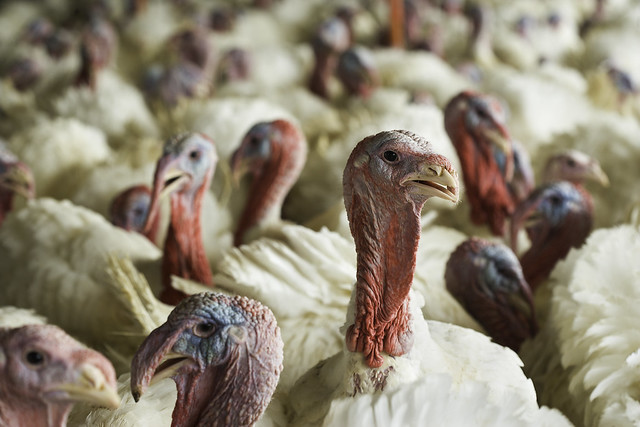
Before digging into a traditional Thanksgiving dinner, it’s common to give thanks for the blessings received throughout the year. So, before you raise your fork, don’t forget to thank the science that helped make that traditional meal even better.
Most people recognize turkey as the centerpiece of the Thanksgiving meal. However, they may not realize that the turkey was not “traditional” until the mid-1940s. That’s when poultry researchers at USDA’s Agricultural Research Service (ARS) responded to consumer demand and brought a new bird to the table.
The Great Depression of the 1930s changed the face of America in many ways, including where and how people lived. Thousands left their farms in search of economic opportunities in the city and fewer babies were born. Additionally, cramped urban living required families to change the way food was stored and prepared. In response to a consumer survey, 87 percent of homemakers wanted a smaller turkey (8-15 pounds) that would be a better fit for smaller home refrigerators, ovens, and families; have more white meat; and no dark feathers.
Most turkeys in the early ‘30s were larger, had dark feathers, and a narrow breast without much meat.
“Scientists at ARS worked with six different types of turkeys to develop the Beltsville Small White (BSW) turkey breed,” said Julie Long, research physiologist with ARS’ Animal Biosciences and Biotechnology Lab in Beltsville, MD. The BSW met all the consumer requirements, including white feathers.
“Feathers of different colors may affect the pigment of the skin,” Long explained. “Some people didn’t understand that and thought there might be something wrong with the meat.”
The BSW turkey made its commercial debut in 1947 and soon dominated the market. Its success, however, was short-lived. In less than 20 years, commercial demand for turkey products led to the development of the Broad Breasted White (BBW), which typically weighs in at 38-40 pounds. By harvesting the BBW turkey at a younger age, it also meets the needs of families that want a smaller bird. The BBW has become the most widely used domesticated turkey and is the breed that U.S. presidents commonly “pardon” on Thanksgiving Day. Beltsville Small White turkeys are still around, but have become so scarce that the breed is listed as in “critical” condition by the Livestock Conservancy. According to Long, only two BSW flocks remain in the country.
So, as you prepare to dig in to your Thanksgiving dinner, take a moment to thank the ARS scientists who modernized the humble “traditional” turkey.
